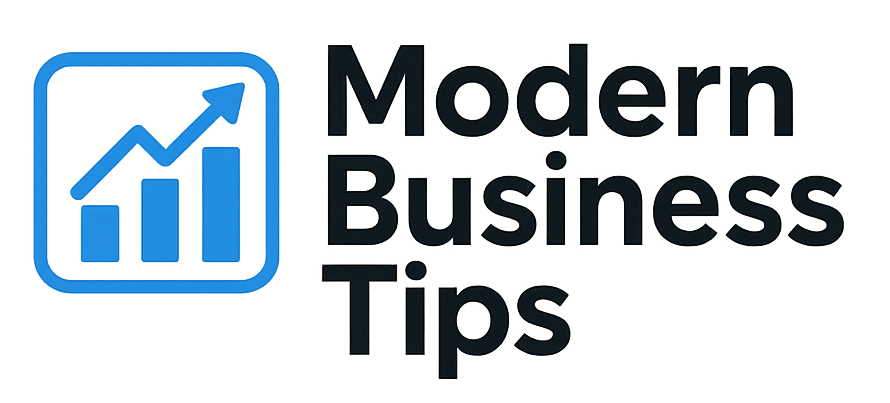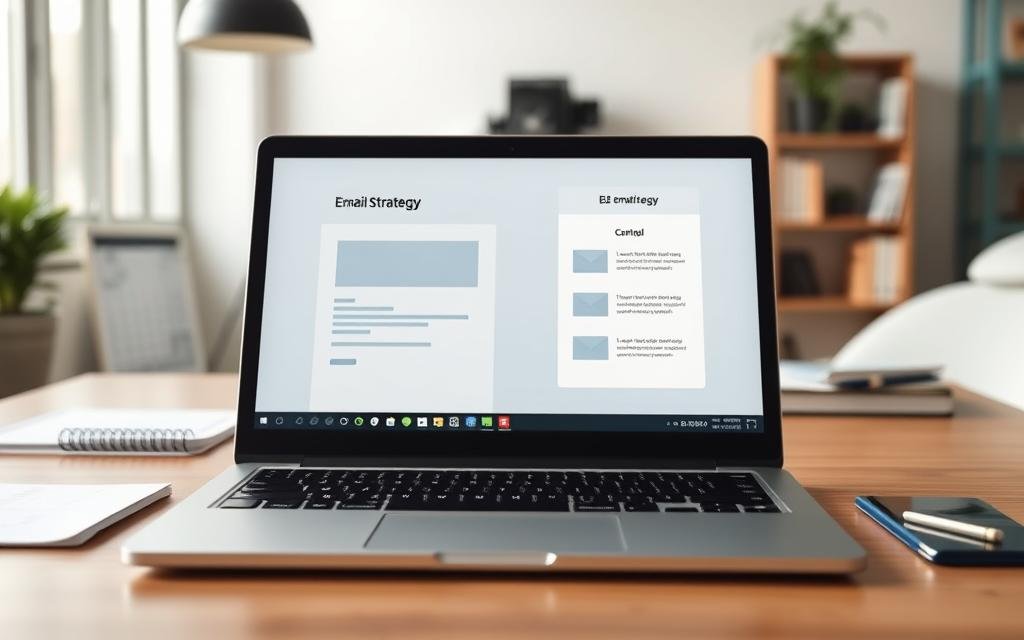Ever wondered why some businesses do great while others struggle with cold calling? It’s often because they use a smart B2B email strategy. This playbook will show you email marketing tactics that beat cold calling in getting responses and leads.
By focusing on targeted, personalized emails, you can make your outreach more effective. Let’s dive into how to use email to grab your audience’s attention and get results.
Key Takeaways
- Understanding the shift from cold calling to B2B email strategies.
- The importance of personalization in email marketing tactics.
- How a targeted approach can significantly improve engagement.
- The key components of effective email campaigns.
- Integrating successful email strategies with sales efforts for optimal outcomes.
- Measuring the effectiveness of your email outreach.
Understanding B2B Email Strategy
B2B email marketing is key for talking to decision-makers and growing leads. It’s more than just sending emails. It’s about sending personalized content that meets specific needs. This is why cold calling, which often fails, is being replaced by email marketing.
What is B2B Email Marketing?
B2B email marketing is about keeping in touch with business clients through emails. It uses customer data to send messages that really speak to the audience. This makes emails more engaging, leading to better open and click rates. Companies that focus on B2B email marketing see better results and stronger customer loyalty.
Why Email Beats Cold Calling
Cold calling is losing its appeal, making email a better choice for reaching out. Email lets marketers send targeted content right to someone’s inbox. It’s perfect for busy decision-makers who can check emails whenever they want. Emails are often more effective than cold calls because they’re more personal.
Key Components of an Effective Strategy
To make a B2B email strategy work, focus on these key areas:
- Audience Targeting: Finding the right people to talk to is essential.
- Compelling Messaging: Messages that speak to the audience’s needs are vital.
- Analytics and Improvement: Keeping an eye on how well your emails are doing helps make them better over time.
Building Your Target Audience
Understanding your audience is key to a good B2B email strategy. Knowing who to talk to helps tailor messages and outreach. This makes your emails more engaging and effective.
I focus on two main things: finding the right customer profiles and segmenting my email list. This way, I can send the right content to the right people. It’s vital for successful B2B lead generation through emails.
Identifying Ideal Customer Profiles
Creating ideal customer profiles (ICPs) means defining my most valuable customers. I look at things like industry, company size, and challenges they face. This helps me target businesses that are likely to engage with my emails.
Segmenting Your Email List
Segmenting my email list is a big part of B2B email marketing. I divide my list based on demographics, purchase behavior, and how they interact with my emails. For example, I can target people who have shown interest in similar products.
| Segment | Characteristics | Targeted Messaging |
|---|---|---|
| New Subscribers | Recently joined the email list | Welcome emails, introductory offers |
| Engaged Users | Open emails frequently, click on links | Personalized content, product recommendations |
| Inactive Subscribers | No interaction in the last three months | Re-engagement campaigns, special discounts |
| High-Value Customers | Consistently purchase and refer others | Loyalty perks, exclusive updates |
By using these strategies, I can better engage my audience. This ensures my emails are relevant and drive results in B2B lead generation.
Crafting Engaging Subject Lines
Creating compelling subject lines is key to better open rates in B2B email campaigns. I dive into the psychology of effective subjects. I use strategies that grab attention while keeping a professional tone.
Elements like personalization and urgency make my email subject lines hard to resist. This makes them more appealing to the recipient.
The Art of Attention-Grabbing Subjects
To boost email engagement, I use creative language and targeted messaging. Personalizing subject lines with the recipient’s name or company builds a connection. Adding a sense of urgency, like limited-time offers, encourages quicker responses.
I aim to spark curiosity without falling into clickbait. This approach keeps my subjects engaging and relevant.
A/B Testing for Better Results
A/B testing is a powerful tool for optimizing email campaigns. I send different subject lines to various audience segments to see which ones get more opens. By analyzing the results, I can improve my messaging for future campaigns.
Understanding what works best with my audience helps me craft more effective subject lines. This ensures each subject line I create is better than the last.
Personalization Techniques
Personalization is key in email marketing. It boosts engagement and response rates. By using effective techniques, I can make content fit each recipient’s needs. This makes the brand more relatable and improves how people respond.
Tailoring Content for Individual Recipients
Knowing what my audience likes helps me craft messages that hit home. I use data from past interactions to make emails that match their interests. For example, segmenting my audience based on their past actions means each person gets a message that’s just for them.
This targeted approach is a cornerstone of successful email strategies. It turns generic content into something personal and meaningful.
Using Dynamic Content
Dynamic content is a powerful tool for personalization. It lets me create emails that change based on the recipient’s profile. This means each person gets a unique experience that’s tailored to their preferences.
This approach boosts engagement and helps build stronger relationships with clients. It makes communication more relevant and impactful.
Designing Your Email Campaigns
When creating an email campaign, design matters a lot. Paying attention to layout, readability, and mobile optimization boosts engagement. Good design makes your emails look great and work well, helping them get delivered better.
Best Practices for Email Layout
To make your emails more effective, consider these design tips:
- Use a clean layout with lots of white space to make it easy to read.
- Incorporate clear headings to help readers navigate your content.
- Utilize bullet points or numbered lists to show important info.
- Optimize for mobile, so your emails look good on all devices.
- Employ visually appealing elements, like images and buttons, in the right spots.
Choosing the Right Call-to-Action
A good call-to-action (CTA) is key to getting people to take action. Here are some tips:
- Use action-oriented language to get people to act fast.
- Make your CTA prominent, with colors that stand out.
- Place the CTA strategically after interesting content.
- Limit the number of CTAs to avoid confusing the reader.
Timing and Frequency of Campaigns
Finding the best time and how often to send emails can really boost engagement. I try to figure out when my audience is most likely to check their emails. Studies show that mid-week and mid-day are the best times, fitting into busy professionals’ schedules.
Using this knowledge is key to improving email deliverability.
Understanding Optimal Send Times
It’s important to send emails when people are most likely to read them. I look at industry trends and my audience’s habits to pick the best times. Here are some tips:
- Emails sent on Tuesdays and Thursdays tend to get more opens.
- Best times to send are between 10 AM and 2 PM.
- Steering clear of early mornings and late evenings helps avoid email overload.
How Often to Send Emails
It’s important to send emails often enough to stay in touch but not so often as to annoy people. I aim to find a balance that keeps my audience interested without overwhelming them. Here are some guidelines:
| Frequency | Recommendation | Impact on Engagement |
|---|---|---|
| Daily | Not recommended for most audiences | May lead to fatigue and reduced open rates |
| Weekly | Optimal for high-value content | Encourages steady engagement and response |
| Bi-weekly | Effective for broader audiences | Balances engagement with recipient comfort |
| Monthly | Good for newsletters and updates | Might lose impact over time, but less intrusive |
By timing and spacing my emails right, I can improve engagement. This ensures my campaigns are as effective as possible.
Analyzing Campaign Performance
Tracking and analyzing email campaigns is key to getting better at email marketing. By using email marketing analytics, I learn how my campaigns connect with my audience. I can see what works and what needs improvement, helping me optimize my campaigns.
Key Metrics to Track
To see how well my email campaigns do, I look at a few important metrics:
- Open Rates: This shows how many people open my emails, helping me see if my subject lines are good.
- Click-Through Rates (CTR): It tells me how many people click on links in my emails, showing if they’re interested.
- Conversion Rates: This metric shows how many people do what I want them to, like buying something or signing up for a webinar.
- Unsubscribe Rates: It tracks how many people choose to stop getting my emails, helping me understand if my content is right for them.
Tools for Email Analytics
There are many tools that make tracking my email campaigns easier. I use:
- Mailchimp: It has great tracking and reporting for how my campaigns are doing.
- SendGrid: It gives me detailed analytics and dashboard insights, making it easy to improve my campaigns.
- HubSpot: It combines analytics with its CRM, giving me a complete picture of how customers interact with me.
Compliance and Legal Considerations
In the world of email marketing, following legal rules is key. Companies must know the CAN-SPAM Act and GDPR to stay safe. This way, I make sure my emails are top-notch, building trust with my audience.
Understanding CAN-SPAM and GDPR
The CAN-SPAM Act has rules for commercial emails, like clear opt-out options and accurate sender info. Knowing these helps me follow best practices for email delivery. GDPR, on the other hand, has stricter rules, like getting clear consent and protecting data. It’s important for businesses in Europe, affecting my email plans.
Best Practices for Privacy
Keeping privacy strong is essential for B2B email strategies. Important steps include:
- Getting clear consent from people before sending emails.
- Offering easy ways for users to opt-out or unsubscribe.
- Protecting user data with strong security.
- Keeping privacy policies up to date.
By doing these, I meet legal standards and earn my audience’s trust. This trust boosts engagement and email delivery, key for business growth.
Nurturing Leads Through Email
Guiding prospects through their buying journey is key. I make sure they get the right info for their needs. A good lead nurturing sequence makes my email campaigns better. It uses targeted content to connect with people at different stages.
Creating a Lead Nurturing Sequence
I aim to send info that matches what my audience wants. My sequence includes:
- Introductory emails that build trust and show value.
- Educational content that solves common problems.
- Case studies that prove my solutions work.
- Regular follow-ups to keep them interested without being too much.
Utilizing Automation for Efficiency
Email automation changes how I connect with leads. It lets me send personalized emails automatically. This saves time and makes my emails more likely to succeed.
Automation helps me focus on important tasks while it handles follow-ups. This way, I can keep nurturing leads without getting bogged down.
Integrating Email with Other Channels
In today’s fast-paced world, a strong B2B email strategy is key. It’s not just about sending emails. I also blend email with social media and SEO. This way, I make my messages stronger and my email marketing more effective.
Combining Email with Social Media
Using social media with my email campaigns boosts my reach. I share my email content on LinkedIn and Twitter. This draws more people to what I offer.
The steps I take include:
- Sharing parts of my email content to grab social followers’ attention.
- Encouraging people to share my email content on social media.
- Running social media ads to send more people to my email sign-up forms.
Enhancing SEO with Email Campaigns
Email is also great for improving my website’s SEO. Each email I send can help link to my site’s valuable content. To do this, I make sure my emails have:
- Links to useful blog posts, resources, or landing pages.
- Actions that get people to engage, like commenting or sharing.
- Special offers for those who visit my site from an email, making their experience better.
Avoiding Common Pitfalls
In my work with B2B email strategies, I’ve seen many mistakes. Not segmenting emails can lead to content that doesn’t resonate with many. This results in lower engagement rates. Also, not personalizing emails can make them feel impersonal and irrelevant.
Ignoring these issues can hurt your email campaign’s success. It’s key to understand these pitfalls for better email campaign optimization.
Another big challenge is following email laws like the CAN-SPAM Act and GDPR. Breaking these laws can harm your reputation and lead to legal trouble. To avoid this, I focus on email deliverability best practices.
These include keeping a clean email list and using verified sending domains. Also, writing compelling subject lines can greatly improve open rates.
By recognizing and avoiding these common mistakes, I can make my email outreach program more effective. High deliverability rates are essential to get my emails into inboxes, not spam folders. Spending time on these best practices boosts my email strategy and helps me connect with prospects better.



